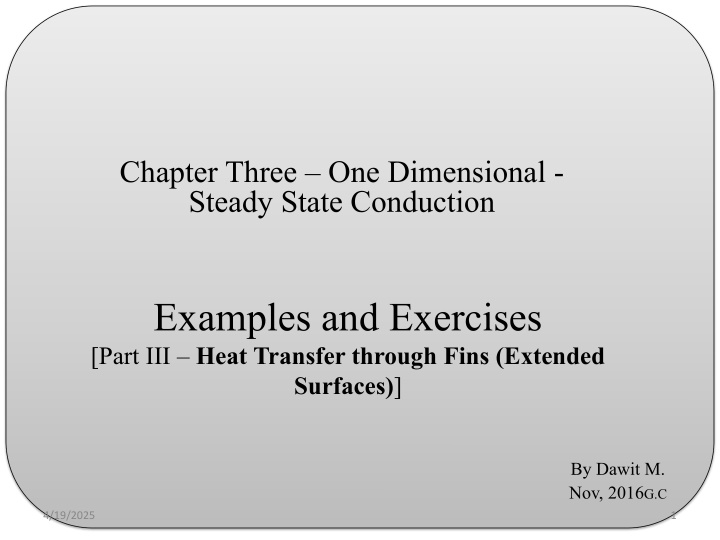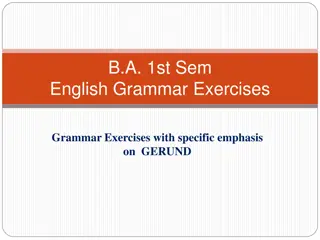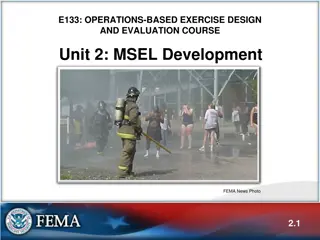
Conduction and Heat Transfer through Fins: Examples and Exercises
Explore examples and exercises on steady-state conduction and heat transfer through fins in this comprehensive study. Learn about performance analysis of pin-finned plates, engine cylinder cooling with fins, and more.
Download Presentation

Please find below an Image/Link to download the presentation.
The content on the website is provided AS IS for your information and personal use only. It may not be sold, licensed, or shared on other websites without obtaining consent from the author. If you encounter any issues during the download, it is possible that the publisher has removed the file from their server.
You are allowed to download the files provided on this website for personal or commercial use, subject to the condition that they are used lawfully. All files are the property of their respective owners.
The content on the website is provided AS IS for your information and personal use only. It may not be sold, licensed, or shared on other websites without obtaining consent from the author.
E N D
Presentation Transcript
Chapter Three One Dimensional - Steady State Conduction Examples and Exercises [Part III Heat Transfer through Fins (Extended Surfaces)] By Dawit M. Nov, 2016G.C 4/19/2025 1
Outline Important Tables and Diagrams Examples Example 1: Performance of Pin Finned Plate Example 2: Engine Cylinder Cooling Assisted by Fins Example 3: Performance of Pin Finned Plate 4/19/2025 2
Contd 4/19/2025 5
Contd 4/19/2025 6
Contd 4/19/2025 7
Exercise 1: Fin Heat Rate 1. A very long rod 5 mm in diameter has one end maintained at 100 C. The surface of the rod is exposed to ambient air at 25 C with a convection heat transfer coefficient of 100 W/m2 K. (a) Determine the temperature distributions along rod constructed from pure copper, Table A.1, for copper, k = 398 W/mK. What is the corresponding heat loss from the rod? (b) Estimate how long the rods must be for the assumption of infinite length to yield an accurate estimate of the heat loss. 4/19/2025 8
Example 2: Engine Cylinder Cooling Assisted by Fins 2. The engine cylinder of a motor cycle is constructed of 2024- T6 aluminum alloy (K = 186W/mK) and is of height H = 0.15 m and outside diameter D = 50 mm. Under typical operating conditions the outer surface of the cylinder is at a temperature of 500 K and is exposed to ambient air at 300 K, with a convection coefficient of 50 W/m2.K. Annular fins are integrally cast with the cylinder to increase heat transfer to the surroundings. Consider five such fins, which are of thickness t = 6 mm. length L = 20 mm, and equally spaced. What is the increase in heat transfer due to use of the fins? 4/19/2025 9
Contd 4/19/2025 10
Example 3: Performance of Pin Finned Plate 3. A hot surface at 100 C is to be cooled by attaching 3-cm-long, 0.25-cm-diameter aluminum pin fins (k = 237 W/m C) to it, with a center-to-center distance of 0.6 cm. The temperature of the surrounding medium is 30 C, and the heat transfer coefficient on the surfaces is 35 W/m2 C. Determine the rate of heat transfer from the surface for a 1-m x 1-m section of the plate. Also determine the overall Effectiveness of the fins. 4/19/2025 11
Thank You! Any Question? 4/19/2025 12




















